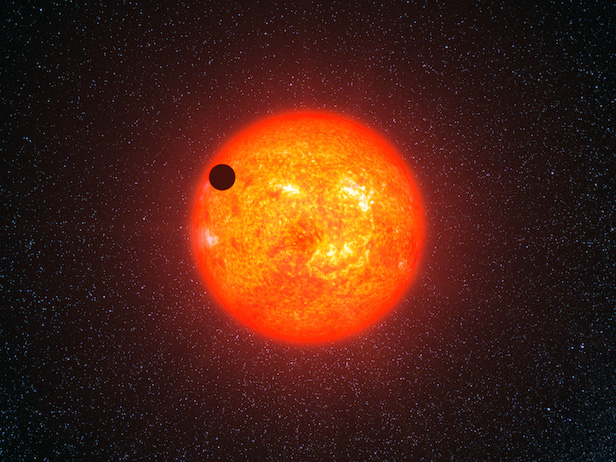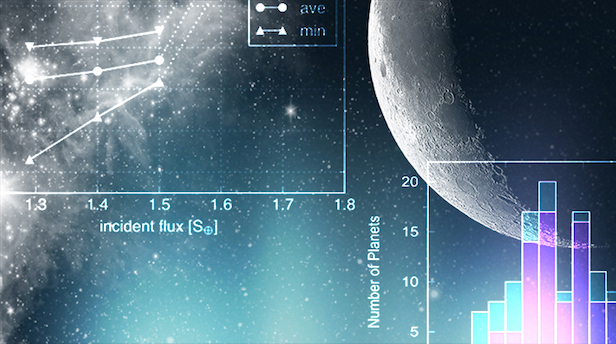Potentially habitable super-Earth discovered 200-light-years away
Out of the 15 recently discovered exoplanets in this study, one super-Earth could potentially support liquid water

Super-Earth is the name designated to exoplanets that are larger than Earth, but not as large as Neptune. Image credit: ESO/L. Calçada
15 new exoplanets have recently been brought to astronomers’ attention, although one is much more intriguing to them. One of the exoplanets is a super-Earth orbiting a small, cool red dwarf star, which could potentially have liquid water on the surface. The development of our understanding of red dwarf stars is vital for us revealing planetary formation and evolution in different stellar systems.
Teruyuki Hirano of Tokyo Institute of Technology’s Department of Earth and Planetary Sciences led the research team that discovered the existence of these 15 new exoplanets orbiting red dwarf systems. The red dwarf star K2-155 is one of the brightest of the bunch, located about 200 light years from Earth. There are three super-Earths in orbit around this star, and the outermost one, K2-155d, has a radius of 1.6-times Earth’s. More importantly, it lies within the star’s habitable zone, which is the region around the Sun where water can hypothetically exist as a liquid.
These results originate from data collected by the second mission undertaken by NASA’s Kepler spacecraft, also known as K2. Esteemed ground-based telescopes, including the Subaru Telescope in Hawaii and the Nordic Optical Telescope in Spain, made follow-up observations of these targets.
Based on the three-dimensional global climate simulations, researchers discovered that liquid water could potentially be present on the surface of K2-155d. “In our simulations, the atmosphere and the composition of the planet were assumed to be Earth-like, and there’s no guarantee that this is the case,” Hirano says.
This means that the habitability of this super-Earth is not yet definitive. This is because there is still much uncertainty about the radius and temperature of the K2-155 star. Analytical techniques such as interferometry would provide much more precise measurements, and therefore more accurate estimations. Another interesting result from this study is that planets orbiting red dwarf starts have unexpectedly similar attributes to planets orbiting stars similar to our Sun.
“It’s important to note that the number of planets around red dwarfs is much smaller than the number around solar-type stars,” says Hirano. “Red dwarf systems, especially the coolest red dwarfs, are just beginning to be investigated, so they are very exciting targets for future exoplanet research.”

K2-155 is home to three super-Earth exoplanets, only one of which lies in the star’s habitable zone. Image credit: Tokyo Institute of Technology
A prime example of this outcome is the clear evidence for the so-called ‘radius gap’ around red dwarf stars. The radius gap has previously been reported around solar-type stars and it shows a distinct lack of planets orbiting between 1.5 to two-times the radius of Earth’s orbit. Thanks to this study, this gap has now also been seen in red dwarf systems, and begs more questions about planetary formation and evolution.
“This is a unique finding, and many theoretical astronomers are now investigating what causes this gap,” says Hirano. Hirano also makes the point of saying that the small number of large planets in the proximity of host stars could be due to photoevaporation. The stars radiation would strip away the planet’s atmosphere, leaving a much smaller planet behind in its place.
The researchers also investigated the relationship between a planet’s radius and the metallicity of the host star. “Large planets are only discovered around metal-rich stars,” Hirano explains, “and what we found was consistent with our predictions. The few planets with a radius about three-times that of Earth were found orbiting the most metal-rich red dwarfs.”
The studies were made as part of the KESPRINT collaboration. This is a group that were originally two separate teams, the Kepler Exoplanet Science Team (KEST) and Equipo de Seguimiento de Planetas Rocosos Intepretando sus Transitos (ESPRINT), before their merger in 2016.
With NASA’s Transiting Exoplanet Survey Satellite (TESS) due to launch in April this year, Hirano is hoping for the discovery of plenty more planets that will aid their research. “TESS is expected to find many candidate planets around bright stars closer to Earth,” he says. “This will greatly facilitate follow-up observations, including investigation of planetary atmospheres and determining the precise orbit of the planets.”
Keep up to date with the latest reviews in All About Space – available every month for just £4.99. Alternatively you can subscribe here for a fraction of the price!




